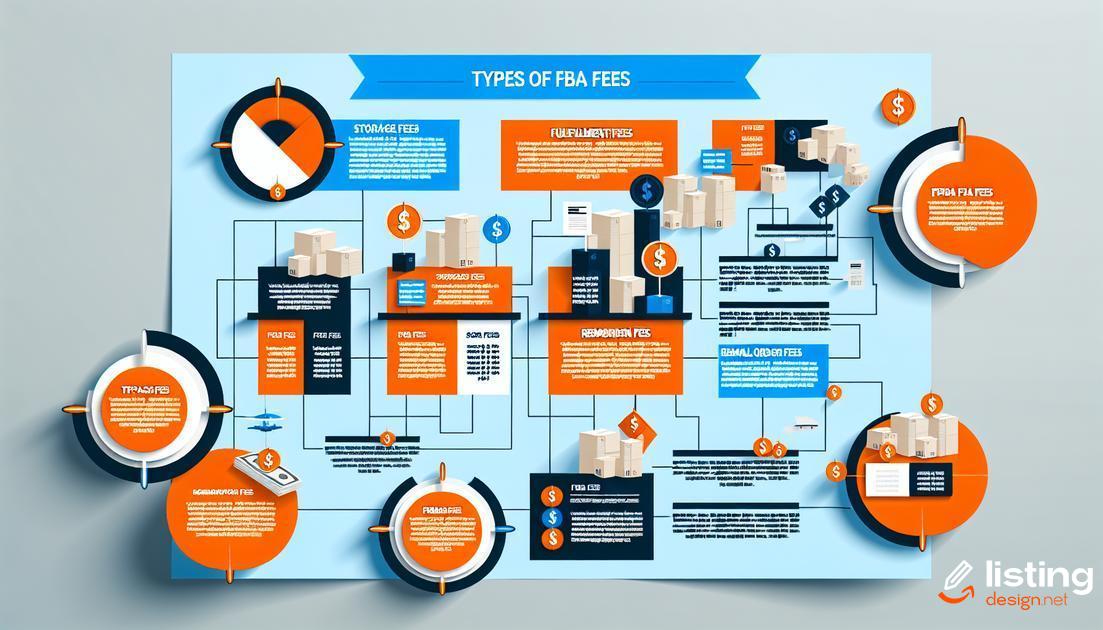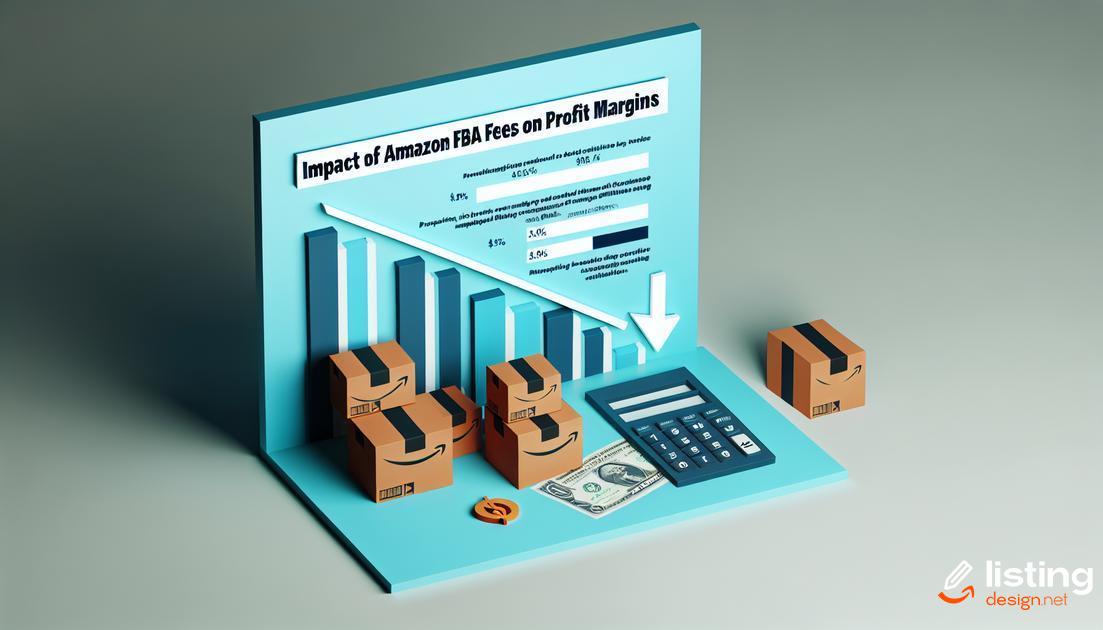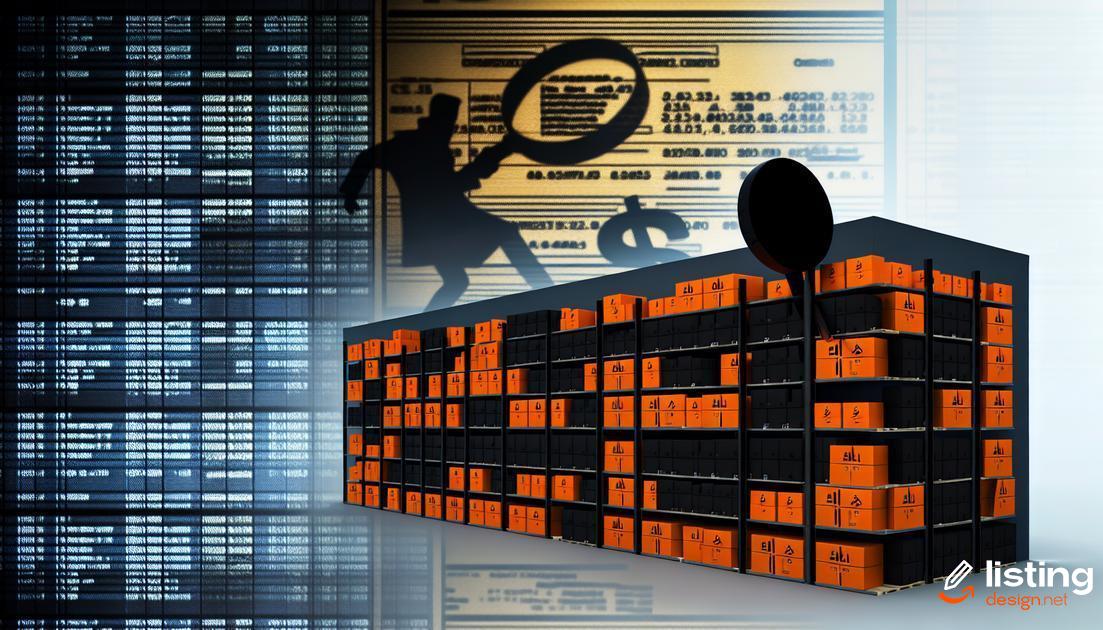Amazon FBA fees are a crucial factor for every seller on the platform. Understanding and managing these costs can significantly boost your profit margins. In this article, we delve into the various types of Amazon FBA fees, how they are calculated, and effective strategies to minimize them.
Table of Contents
Understanding Amazon FBA Fees
Amazon FBA, or Fulfillment by Amazon, imposes various fees that sellers need to be aware of to maintain profitability. These fees can significantly impact your profit margins if not managed correctly. FBA fees include several specific charges, most notably the fulfillment fees and inventory storage fees.
The fulfillment fees are charged per unit and depend on factors like the size and weight of the item being sold. Amazon handles picking, packing, and shipping your products to the customers, which is covered by this fee. Meanwhile, storage fees are applied monthly and are based on the volume of inventory stored in Amazon’s fulfillment centers. These fees vary seasonally, being higher during peak seasons such as the holiday period.
Additional fees may apply for items that require special handling or have aged inventory. It’s crucial to keep track of your inventory to avoid overstocking and to manage slow-moving items effectively.
Common Types of FBA Fees
Some of the common types of FBA fees include:
- Fulfillment Fees: Fees for picking, packing, and shipping items.
- Storage Fees: Based on the space your inventory occupies in Amazon’s warehouses, calculated per cubic foot.
- Referral Fees: Percentages Amazon takes per sale, varying by product category.
- Long-Term Storage Fees: Additional charges for items stored in Amazon’s warehouses for longer than 365 days.
By mastering the details of these fees, sellers can better manage their costs and boost their profit margins effectively.
Types of Amazon FBA Fees
Amazon FBA (Fulfillment by Amazon) comes with a variety of fees that sellers need to account for. Let’s explore the most common types:
Fulfillment Fees
This is charged for picking, packing, and shipping your products. Standard-size items and oversize items have different fee structures. Costs vary based on the weight and dimensions of each item.
Storage Fees
These fees are applied to products stored in Amazon fulfillment centers. Monthly storage fees depend on the calendar month and the volume of inventory in cubic feet. Long-term storage fees are levied on items stored for more than 365 days.
Referral Fees
Charged as a percentage of the item’s selling price, referral fees vary across different product categories. For instance, electronics might have different fee structures compared to clothing.
Return Processing Fees
When customers return a product, Amazon charges a return processing fee, particularly for orders in categories like apparel or shoe categories.
Removal Order Fees
If you decide to remove inventory from Amazon’s warehouse, removal order fees are charged. These fees vary depending on whether you choose disposal or return services.
Other Service Fees
Additional services like labeling and prepping incur extra costs. It’s important to check Amazon’s guidelines for these specific requirements.
How to Calculate Amazon FBA Fees
To accurately calculate Amazon FBA fees, it’s crucial to account for the various fee types involved. Here’s a step-by-step guide:
-
Identify the Item Category
Amazon categorizes items into different groups. Each category might have specific fees associated with it, so start by identifying which category your product belongs to.
-
Determine the Product Size and Weight
FBA fees are significantly influenced by the dimensions and weight of the product. Use Amazon’s FBA calculator to input these details and get provisional fee estimations.
-
Calculate the Fulfillment Fee
The fulfillment fee includes picking, packing, and shipping costs. This fee can vary depending on the product’s size and weight. Add this fee to your calculations.
-
Include Storage Fees
Amazon charges for storing products in their warehouses. Storage fees are charged monthly and can vary based on the space your products occupy. It’s essential to factor in both monthly and long-term storage fees if applicable.
-
Account for Additional Fees
Additional fees might include labeling, prepping, and returns processing fees. Make sure to check all possible additional charges associated with handling your specific product.
-
Use the Amazon FBA Calculator
To get an accurate total, utilize the Amazon FBA Calculator. Enter all necessary details, including product category, dimensions, weight, and selling price. The calculator will provide detailed FBA fee breakdowns.
By carefully considering each component of Amazon FBA fees, you can better manage costs and optimize your profit margins.
Impact of Amazon FBA Fees on Profit Margins
The impact of Amazon FBA fees on your profit margins can be significant, affecting your overall profitability. Each fee component must be accounted for meticulously to gauge its influence on your bottom line. Factors such as advertising costs, refund administration fees, and other variable expenses can erode profit margins if not managed properly.
One key impact is the storage fees, especially for sellers who have slow-moving inventory. Products that remain in Amazon’s warehouses for extended periods incur higher fees, which can severely dent profitability. Similarly, long-term storage fees kick in for items stored for over 365 days, adding another layer of cost.
Another critical factor is the pick and pack fees. These are applied every time an item is selected and packaged for delivery. The rate varies based on the size and weight of the product, making it imperative to optimize your inventory selection to include items that have a favorable fee structure.
Additionally, seasonal fluctuations in fees can impact profit margins. For instance, during peak seasons, the increased storage costs and higher fulfillment fees can slice into your profit margins more aggressively.
It’s crucial to use profit margin calculators and other analytical tools to get a comprehensive view of how these fees affect your products specifically. Knowing each fee’s impact enables you to make informed decisions about pricing, inventory management, and promotional strategies.
How to Minimize Amazon FBA Fees
Reducing Amazon FBA fees requires a strategic approach. Here’s a breakdown of key strategies:
Optimize Product Packaging and Dimensions
Amazon charges fees based on the size and weight of your products. By optimizing the packaging, you can reduce the dimensional weight, which may result in lower fees. Choose compact and lightweight materials without compromising product safety.
Leverage Amazon’s Fee Calculator
A smart way to keep track of potential fees is by using Amazon’s FBA fee calculator. This tool helps you estimate costs for storage, fulfillment, and additional services specifically based on your product details.
Select Products Carefully
Focus on selling products with higher profit margins to absorb the FBA fees more easily. Research market demand and competition to pinpoint the most profitable items.
Negotiate with Suppliers
Work with your suppliers to reduce the cost of goods. Lowering your purchase price can help offset the FBA fees, increasing your overall profit margins.
Monitor Storage Time
Minimize long-term storage fees by monitoring your inventory. Ensure that products are sold within the short-term storage limits set by Amazon. Create sales strategies or promotions to move slow-moving inventory.
Bundle Products
Consider creating product bundles to sell multiple items together as one unit. This can result in lower fees per unit sold, as Amazon calculates fees based on the combined weight and size of the bundled items.
Stay Updated with Fee Changes
Avoid surprise costs by staying updated with any changes in Amazon’s FBA fee structure. Regularly review notifications from Amazon and adjust your pricing strategies accordingly.
Use Amazon’s Inventory Performance Index (IPI)
Maintaining a high IPI score can lead to benefits, including reduced storage fees and better inventory management. Keep track of your score and follow best practices to improve it.
Hidden Costs in Amazon FBA
When selling on Amazon, it’s crucial to be aware of hidden costs that might impact your bottom line. These costs are not always apparent and can accumulate over time, affecting your profit margins.
Shipping Costs: While the FBA (Fulfilled by Amazon) service covers a broad range of logistics, there are still shipping costs to get your products to Amazon’s fulfillment centers. Unexpected charges such as expedited shipping or shipping from multiple distribution centers can add up.
Labeling and Preparation Fees: Products often need specific labels or preparation to meet Amazon’s standards. If you can’t manage this process yourself, you’ll need to pay for Amazon’s labeling and preparation services.
Long-term Storage Fees: Storing inventory in Amazon’s warehouse for extended periods leads to high storage fees. Monitor your stock levels and keep them optimal to avoid these charges. This is particularly true during peak seasons where fees can significantly increase.
Return Processing Fees: Returns are a part of doing business online. However, processing returns through Amazon FBA incurs additional fees that can affect your profitability, especially if the return rate is high.
Removal and Disposal Fees: If your products don’t sell, you might need to remove or dispose of them. Amazon charges fees for both removal and disposal of inventory. Plan your inventory management carefully to minimize these costs.
Being mindful of these hidden costs helps in strategizing better and safeguarding your profit margins. Make sure to review Amazon’s fee structure regularly to stay updated on any changes that might impact your business expenses.
Amazon FBA Storage Fees Explained
Amazon FBA storage fees can significantly impact your bottom line if not properly managed. There are two main types of storage fees: monthly inventory storage fees and long-term storage fees. Monthly inventory storage fees are charged based on the volume of space your inventory occupies in fulfillment centers. These fees vary depending on the time of year, with higher rates during the peak season from October to December.
On the other hand, long-term storage fees apply to items that have been in Amazon’s fulfillment centers for longer than 365 days. Products that stay unsold for a year or more incur additional charges, encouraging sellers to move their inventory quickly.
It’s important to monitor your inventory levels closely to avoid excessive storage fees. Many sellers use tools to set alerts when their inventory levels approach the threshold for long-term storage fees.
Additionally, considering multi-channel fulfillment or offloading slow-moving inventory via discounts and promotions can help you avoid these charges.
Regularly reviewing your inventory performance metrics and sales velocity can also ensure you are not overstocking items that do not sell quickly, minimizing the need for prolonged storage.
Finally, taking advantage of Amazon’s Inventory Placement Service allows you to ship all your inventory to a single location, reducing inbound shipping costs and optimizing the distribution to different fulfillment centers, potentially lowering your storage fees.
Seasonal Changes in Amazon FBA Fees
Amazon FBA fees are subject to fluctuations influenced by various seasonal factors. During peak shopping seasons like Black Friday, Cyber Monday, and the holiday season, the demand for fulfillment services escalates, leading to increased fees. Sellers should anticipate these changes as these periods often come with higher storage and fulfillment costs.
,
Quarterly fluctuations can also impact FBA fees significantly. For instance, Q1 might see a reduction in fees following the Christmas rush, while Q4 typically witnesses a surge due to the holiday shopping frenzy. Understanding these quarterly trends can help sellers plan their inventory and budget more efficiently.
,
Special Event Fees
Throughout the year, Amazon might introduce special promotional events, such as Prime Day, which can cause temporary changes in FBA fees. Being aware of and preparing for such events can prevent unexpected costs and stockouts.
,
Sellers should also consider the impact of local and international shopping events. Events such as back-to-school seasons or international holidays in regional markets might not be as predictable but can still affect fee structures due to regional demand spikes.
,
Seasonal weather conditions can lead to surges in certain product categories. For instance, winter might boost demand for seasonal clothing or equipment, leading to higher storage fees due to increased inventory levels. Sellers should align their strategy with these seasonal needs to manage FBA fees effectively.
Why Amazon FBA Fees Change Over Time
Factors Influencing Fee Adjustments
Amazon FBA fees evolve due to a variety of factors. The marketplace needs to adapt to changes in operational costs, shipping expenses, and seasonal demand. Additionally, regulatory changes and inflation play a role in these adjustments, impacting how much sellers are charged.
Operational Efficiency
Fees may change to reflect improvements or setbacks in operational efficiency. For instance, Amazon might invest in new technology or infrastructure that initially raises costs but ultimately streamlines the process and reduces fees in the long run.
Shipping and Handling Costs
Shipping fees are another crucial element. With changes in fuel prices and carrier rates, Amazon has to adjust its FBA fees to maintain a balance between cost and service quality. During peak seasons, shipping costs can fluctuate significantly, prompting temporary fee changes.
Economic Conditions
Economic conditions such as inflation can lead to higher fees. As the cost of goods and services increases over time, Amazon must revise its fee structure to account for these economic shifts, ensuring that it can continue to offer reliable fulfillment services.
Regulatory Compliance
Changes in laws and regulations can necessitate fee adjustments. Compliance with new mandates may require additional operational costs, which are then reflected in the revised FBA fees.
Best Practices to Handle Amazon FBA Fees
- Regularly Audit Your Fees: Automated tools can provide a breakdown of fees, allowing you to spot discrepancies or overcharges. Reviewing your fee statements monthly can unveil unexpected charges.
- Optimize Inventory Levels: Overstocking leads to higher storage fees. Proper inventory management can keep your storage fees low, especially during peak seasons.
- Use FBA Fee Calculators: Utilize Amazon’s fee calculators to estimate costs before listing new products. This helps in understanding profitability and setting competitive prices.
- Take Advantage of Small and Light Program: If your products are eligible, this program can significantly reduce your FBA fees by leveraging lower storage and fulfillment costs for smaller, lighter items.
- Repackage Returns: If returned items are still in good condition, repackage and resell them to recoup FBA fees and reduce losses.
- Evaluate Product Dimensions: FBA fees are heavily dependent on the size and weight of products. Choosing more compact packaging can minimize these costs.
- Leverage Multi-Channel Fulfillment: Use Amazon’s MCF to fulfill orders from other sales channels, which can improve logistics efficiency and spread the fulfillment cost.
- Investigate Reimbursement Opportunities: Amazon often makes mistakes in inventory handling. Regularly check for lost or damaged inventory and file for reimbursements when applicable.
Comparison of Amazon FBA Fees with Other Fulfillment Services
When comparing Amazon FBA fees with other fulfillment services, there are several key factors to consider. Amazon FBA charges include fulfillment fees, storage fees, and other miscellaneous costs that may not be present with other services.
Other fulfillment providers such as ShipBob, Deliverr, and ShipStation also have their fee structures. However, they often offer more transparent pricing models. It’s crucial to analyze these aspects in detail to get a comprehensive understanding of the total costs involved.
For instance, fulfillment fees for Amazon FBA cover pick & pack, weight handling, and shipping, while other service providers might separate these costs or include them in a different manner. This makes a direct comparison slightly challenging but essential for a cost-effective decision.
Storage fees are another critical factor. Amazon FBA charges based on the volume of space your products occupy in their warehouse over a month. On the other hand, some fulfillment services offer more flexible or competitive storage pricing, which can be advantageous, especially for large volumes of inventory.
Additionally, seasonal fluctuations in fees are more pronounced with Amazon FBA. During peak seasons, Amazon tends to increase fees due to higher demand and limited storage space. It’s essential to consider these seasonal changes when making a comparison.
Analyzing Total Costs
To effectively compare total costs, consider all potential charges. Account for both regular and peak season fees across different services. Evaluate if other services provide any additional benefits, such as reduced shipping rates, faster delivery times, or superior customer support, which may offset higher initial fees.
Lastly, keep in mind the potential hidden costs associated with each service. Understanding these details will allow you to make a cost-effective and informed decision, maximizing your profit margins.
Is Amazon FBA Worth the Fees?
When considering whether to utilize Amazon’s FBA (Fulfillment by Amazon) service, the associated fees can significantly impact your decision. Several crucial factors help determine whether the service is worth the costs.
Revenue vs. Costs: One of the primary considerations is to weigh your potential revenue against the fees that Amazon charges. FBA fees include storage fees, fulfillment fees, and sometimes referral fees, which can add up quickly.
Benefits of Amazon FBA: Amazon FBA offers several benefits that could justify the fees. These include faster shipping, access to Amazon’s Prime customers, and streamlined customer service. These benefits might help you increase sales to a level where paying the FBA fees makes sense.
Break-Even Analysis
Conducting a break-even analysis is a helpful step. This analysis involves comparing your cost of sales (including FBA fees) and your selling price to determine the minimum number of units you need to sell to cover these costs. If you can sell above this threshold, the service might be worth it.
Competitiveness: Consider how FBA may affect your competitiveness. FBA can provide logistical benefits that might enable you to compete more effectively with other sellers.
Ultimately, determining whether Amazon FBA is worth the fees will depend on your specific business model, product pricing, and volume of sales.








